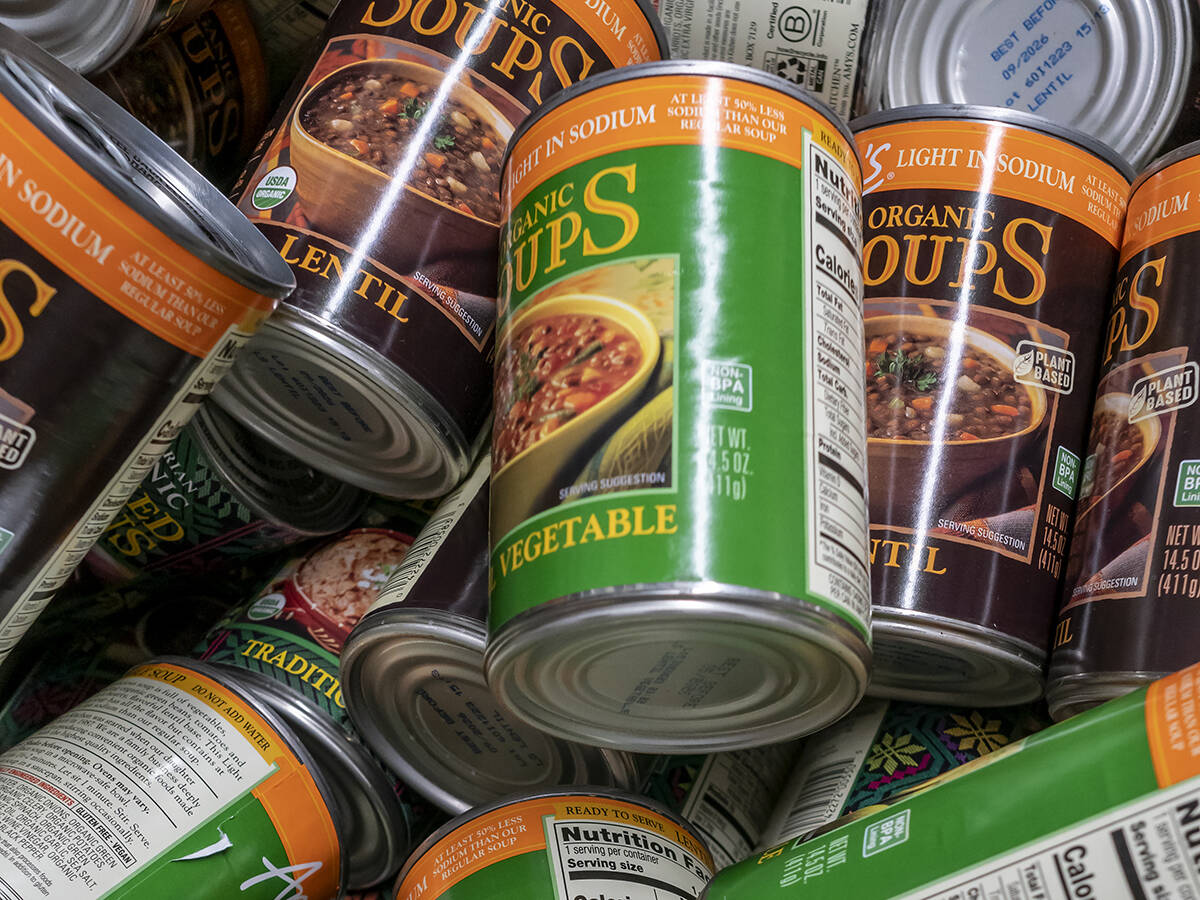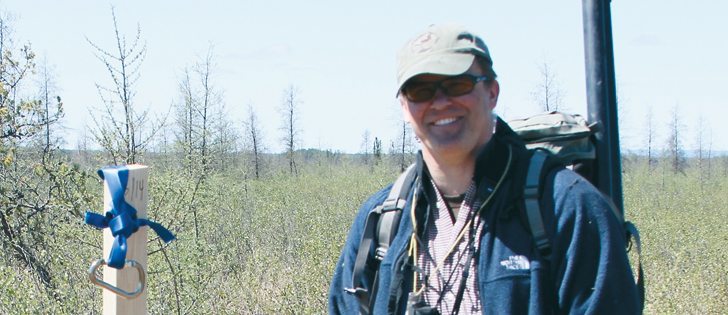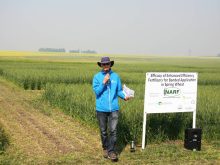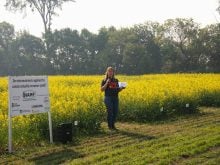Cream of the crop | Breeding sour, native grapes that survive -45 C temperatures with quality fruit is key to commercial production
A University of Saskatchewan researcher is convinced quality grapes can be grown on the Prairies.
Tyler Kaban, who has been breeding grapes for 12 years, said fruit research is challenging, requiring generations of specialization to achieve desired quality.
“It is a lifetime of work. I’m confident that it’s the foundation work that can be built upon,” he said as he inspected grape seedlings after a night of heavy rain.
“Somebody younger will have to pick it up from me someday and continue on.”
Read Also

Sustainable food has ‘lost all meaning’: prof
That marketing strategy is deader than a doornail, says a University of Guelph professor who specializes in consumer preferences and perceptions of agriculture and food.
A recently completed masters degree at the U of S related to breeding grapes has grown into a research technician’s job with the university’s fruit program, which has allowed Kaban time to continue working on his grape research.
Several plots at the university’s Horticulture Field Lab in Saskatoon are dedicated to a nursery of grape seedlings and established vines.
The research orchard also includes apples, apricots, sour cherries, haskap and pear.
Kaban’s research is focusing on developing high quality grapes for the table, juices and wines. Commercial production is also a possibility.
Prairie winter’s extreme and lasting cold is the biggest hurdle to overcome to grow delicious grapes with a pleasing aroma. He said the challenge is developing hardy cultivars.
Fortunately, grapes are native on the Prairies, where they have been growing in the wild for thousands of years.
The prairie original, Vitis riparia, yields a small, dark blue, sour tasting and herbaceous berry. It’s tough, having developed the ability to survive -45 C temperatures
It’s this robustness that is the foundation for Kaban’s research.
“That’s where all the hardiness genes come from, so we’re crossing the wild stuff with the really good stuff that you would see in your supermarket, grocery store or wine grapes and trying to get the best of both worlds: quality and hardiness,” he said.
Cynics only need to look south to Minnesota for evidence that grapes can be bred on the Prairies.
“The same thing happened at the University of Minnesota about 30 years ago,” Kaban said.
“There were skeptics saying that you can’t breed hardy grapes for the upper Midwest. They succeeded and now they have high quality table grapes and wine grapes. There’s no reason why we can’t do the same here because their basis for hardiness is our wild grape species, Vitis riparia.”
He said the production of domesticated grapes has a long history, approximately 8,000 years. As well, the entire grape species can intercross.
“When you have the good traits from each species, there lies the potential, the possibility of combining all these things,” he said.
Planting thousands of seedlings has been the first step for Kaban, who has been kept busy during a summer of big winds and heavy rainfalls.
All of the tender plants need to be well-staked and rows kept clean of weeds.
“It’s really a numbers game. You have to produce very large seedling populations to come up with the one that has a lot of the good traits in one package,” he said.
“They say a good selection is about one in 10,000 seedlings. If it’s hardy, it probably won’t be high fruit quality, so really it’s like winning the lottery to get the combination of both.”
He said it’s particularly important that all the fruit ripen in the prairie growing season.
“Saskatoon gets between 750 and 800 growing degree days at 10 C. We need a vine that will ripen in that window and to consistently produce a crop. That is related to hardiness in the end because the vine needs to produce its crop and shut down in our season so it can be prepared for the winter,” he said.
“Once you get those few that are super hardy, from that point on your odds are greater when you start intercrossing them because you know those traits already exist in there. So they add on top of each other.”
Kaban’s research program is showing signs of success and gaining international attention. He recently spoke to fellow researchers and enthusiasts at the North American Fruit Explorers conference in Saskatoon.
One of Kaban’s next steps is testing how the vines will grow in different prairie environments. This summer, he began the process of distributing replicates from the university’s controlled setting to co-operators throughout the Prairies.
“When we come up with hardy cultivars, we will definitely have the hardiest grape vines in the world by far,” he said.
“That will be our claim to fame, being able to survive zone 2 in Canada in 10-year lows of – 45 C. It is possible.”


















